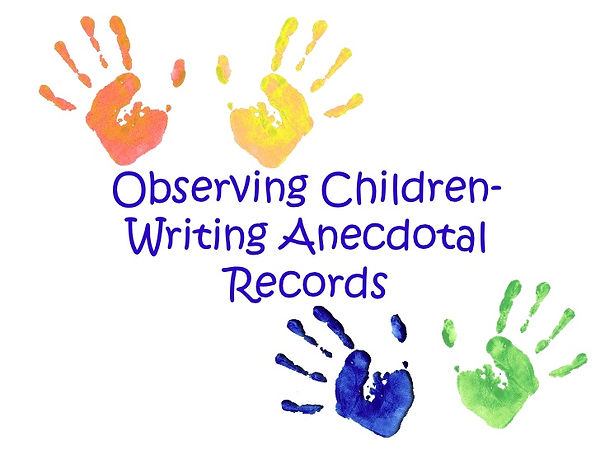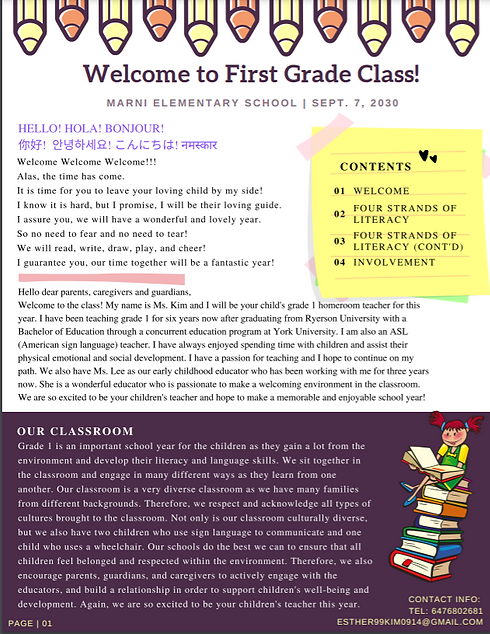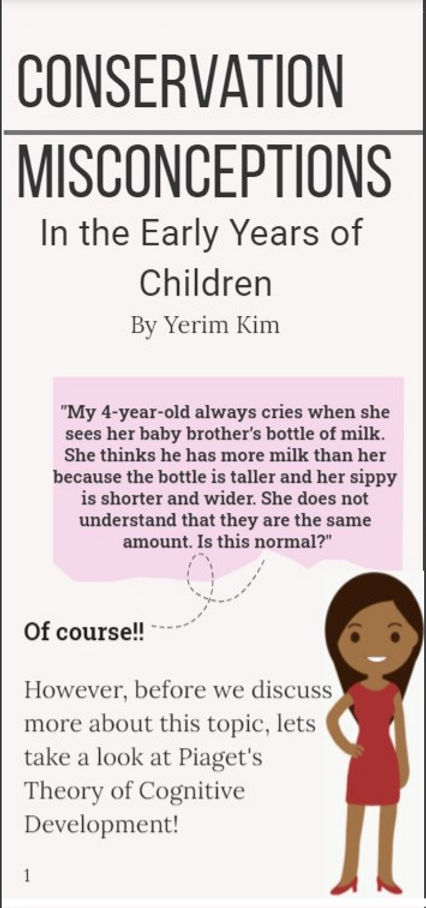Observation/ ELC: CLD 102
Observing Children
During the observations class, I learned about the different ways we could record the observations of the child such as anecdotes, running records, time sampling, etc. This course taught me how to observe, what to write down, and how to write the observations down. Writing down all the observations in a descriptive way was a bit hard in the beginning. But, through practice, I managed to do it well soon. This was a beneficial course for me to use it in my real life because it taught me that we should not assume what children will like or will do. Through these observation skills, I was able to observe the children better in my placement and noticed the patterns of their interests. Observing the children helped me better to understand their strengths and weakness of the children. Through this, I was able to make activity plans and adjust the environment of the center so that the children can improve their skills and explore more gradually to develop. This observation also helped me to build a good relationship with the children and connect to them through the knowledge I had about them.

Environments: CLD 111
Designing a Classroom
I learned about the importance of the environment of the center during this class. This class taught me about the different philosophies and approaches that affect children. Here, I learned about the Montessori approach. This approach was relatable because it talked about giving freedom to the children by providing suitable environment children will want. In this class, I also had a chance to visit the ELC to see their classrooms and recreate them into my own by adding rearranging and removing items depending on the approach I stood up for. This class helped me reflect upon my placement because it helped me be aware of how things are placed in the placement. It helped me to think about the different kinds of environments that assist in the development of the child in many ways.
 |  |
|---|

This literacy newsletter was the first newsletter that I have ever written. I had many troubles and challenges while making one. I was unfamiliar with what I was doing and was confused about whether I was doing the right thing. Being creative and also thinking of ways to reassure parents was a challenge. However, at the same time, since I was able to make one newsletter, I am now confident in making another one. This assignment gave me an opportunity to experience what it is to be an elementary teacher. It taught me that an educator is not only there to teach children, but also there to help families understand and navigate through the children's learning together side by side.
Literacy Newsletter
Literacy in the Early Years: CLD 314
Cognitive Development
CLD307
Brochure for parents
This assignment was to design a brochure that could correct parents' common misconceptions and provide them with helpful information. This assignment allowed me to realize that there may be a lot of other misconceptions in the world that parents believe if not told correctly. This allowed me to realize the importance of knowing the correct information and the importance of studying continuously.
Moreover, through this course, I was able to learn an in-depth understanding of children's early thinking and learning processes. I learned the role of an educator to guide children's cognitive growth.
Press the button below to read the full brochure!

Articles that I consider significant
Hammarberg, T. (1997), A School for Children with Rights, Florence: UNICEF International Child Development Centre,
Issues with education:
Universal access;
Hierarchy and extreme pressure;
High direct costs
Indirect costs and Poverty (lack of food, clothing);
No adjustment to working children
Discrimination
Bad environment, long travel distances
Inappropriate and bad quality education.
Conflict, crisis, and violence
Equal opportunity;
Content of education (incl. imp. of HR education)
Cultural roots & global values;
New methods of learning;
Mutual respect
Pupil participation; &
Role of teachers, parents and community.
I liked his analysis of the eight issues with education around the world. I liked how he stated that some of the major reasons that contributed to low enrollment and high dropout were a high direct cost that can be hidden and open, and an indirect cost also known as opportunity cost. Hidden high direct costs are fees that families have to pay for the things related to schools such as uniforms, pens, papers, lunch and etc. Therefore, due to these matters, I learned that 'free schooling' may not always be free. I also found it interesting to learn that taking care of younger siblings, instead of going to school, would be considered an indirect cost. The conflict between the financial needs of the family, and the right of the individual were understandable but at the same time, sad.
Dean, H. (2006). Short Introductions: Social Policy. Cambridge: Polity Press. (pp. 1‐12).
This article describes what social policy is. Social policy in general is what the government does or doesn't do in relation to health, education, housing, and etc. It focuses on improving the daily lives of an individual and meeting human needs in order to promote a higher quality of life, which is their main goal. In other words, it is referred to as “the study of human well-being” (Dean, 2006, p. 1). It “entails the study of the social relations necessary for human wellbeing and the systems by which wellbeing may be promoted” (Dean, 2006, p.1). It looks closely at the lives of individuals and looks for things that can affect their lives. Hence, it is the reason why services that are needed to make someone's life worth living to includes essential services. Therefore, in order to maximize the chances of the individuals to have a good life, we need to understand what may contribute and make it up towards the nature of human needs.
I enjoyed this article because it taught me the importance of social policy. We should definitely care about social policy because it is one of the main reasons individuals engage in a community or a society. Since we are not an individual that lives alone, but rather relies on others, we get affected by many different groups and societies. Moreover, social policy has an impact on every single asset of our life and also sets an unknown boundary on how we live in the world. It decides how much our quality of life will rise through the types of services the government provides. Therefore, as educators, we have to highly focus on the ECE policy because we can obviously see that the childcare system in Canada is not doing well. I am glad that this article taught me this and gave me a chance to think deeper about how society works around us.
- I learned to build relationships with children, families, and staff members
- I learned to acknowledge that everyone is different
- I learned to communicate with families and support them with their needs
-I learned to be more flexible in means of activities
- I learned to respect and be nonjudgmental with families
- I learned to ask for help
- I learned the importance of communicating with staff members
- I learned to observe children's interests and inquiries all the time
- I learned that language is not the only way we can communicate with families (Body language, my first language, or google translate)
- I learned to reflect on my feedback and learn about my strengths and weakness
- I learned what a research consultant does and how it looks like
Things I Leaned from Placement
